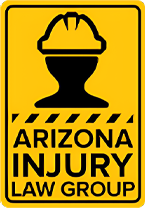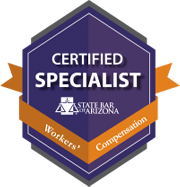Dealing With Workplace Violence

According to the U.S. Department of Labor’s Bureau of Labor Statistics, after declining over several consecutive years workplace fatalities are again on the rise. In 2016, total fatalities topped 5,000 for the first time since 2008.
At nearly forty percent, BLS statistics show that transportation-related incidents remain by far the most common cause of fatalities. Perhaps surprisingly, however, workplace violence remains a significant threat to workers. In 2016 there was a 23% increase in violence-related deaths in workplaces over the previous year, making workplace violence the third most common cause of fatalities. Arizona, where violence accounted for 17% of all work-related deaths in 2016, has seen a similar and troubling trend.
BY THE NUMBERS
INCIDENTS OF WORKPLACE VIOLENCE TYPICALLY FALL INTO ONE OF FOUR CATEGORIES:
– Criminal Intent – Violence that occurs during the commission of a criminal act. An example is a convenience store worker being shot by an individual who is robbing the store
– Customer/Client – Incidents in which a worker is the victim of violence at the hands of a customer or client of the worker’s enterprise. Social service and health care workers are the most frequent victims of this type of workplace violence, usually at the hands of an emotionally or mentally disturbed or distraught client or patient.
– Worker On Worker – This includes incidents involving two or more current employees as well as those in which a former worker with a grudge against a company or a particular manager or co-worker returns to the business and commits an act of fatal violence.
– Personal Relationship – Incidents in which a non-employee who is known to an individual worker attacks that worker while he or she is at work. Female workers are most often the victims in this scenario, typically at the hands of a current or former spouse or partner.
ACTIVE SHOOTER INCIDENTS
Whatever the relationship between perpetrator and victim, the deadliest confrontations are of course those involving firearms. As we know from prior incidents, shooters will frequently target individuals at random, even if they are seeking a specific victim, and the attack most often occurs in a confined space, such as an office building. In such so-called “active shooter” situations, the U.S. Department of Homeland Security and most experts urge individuals to remain calm and take one of the following actions, listed in order of preference:
– Run. If there appears to be a safe escape route, get out as quickly and quietly as possible. Leave your belongings behind – they will only slow you down. Once you are outside, find a secure location away from the building and out of sight. If you have a cell phone, dial 911 – don’t assume someone else has already done so. Sit tight and wait for the police to arrive.
– Hide. If there’s no ready escape route, try to find a hiding place with a door you can lock. If possible, barricade the door with any available heavy object. Avoid locations, such as storage rooms, in which you’ll become trapped if the shooter finds you. Silence your phone, but call 911 and report your location.
– Fight. As an absolute last resort if your life or the lives of others are in immediate danger, fight the shooter by throwing whatever objects are at hand or using an improvised weapon.
ADDRESSING WORKPLACE VIOLENCE: HOPE FOR THE BEST, BUT PREPARE FOR THE WORST
Every organization, no matter its size, should take at least the following steps to both reduce the odds of an incident of fatal workplace violence and be prepared should the worst occur:
- Adopt, publicize and enforce a “zero tolerance” policy. This can sometimes require a hard or seemingly unfair decision, but only consistent enforcement will send the message that violence won’t be tolerated.
- Develop a mandatory employee training program. If possible, design it so that it is relevant to the business or workplace. The federal Occupational Safety and Health Administration (OSHA) has materials focused on healthcare workers and taxi drivers, among others. The National Safety Council also offers a number of emergency preparedness training modules, including one on workplace violence.
Contact your local or state law enforcement agencies about scheduling a mock active shooter exercise
Get Help Today
Call Immediately For A Free, No Obligation Consultation And Let Us Help You Put Your Life Back On Track. Let Us Help You
Regain Normalcy And Stability Again. We Want To Help You Get The Benefits You Need And Deserve!


